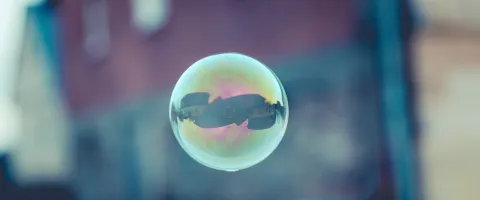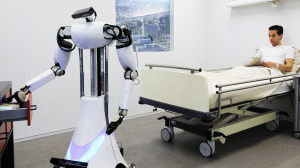Strain on resources, current practices causing pollution, businesses losing valuable materials and pressure from consumers and regulators: these are just some of the factors behind the drive to move away from our linear economy to a circular model. Today, the flow of our economy follows the wasteful trajectory of ‘take, make, dispose’, beginning with the extraction of raw materials to satisfy consumer demand, and generating massive amounts of waste.
Along the way, many resources leak from the value chain. How can we change this, so that materials and products retain their highest value for as long as possible?
Some scientific advances are identifying new ways to retain value in the economy and reduce waste. Realistically our economy is not going to become the abstract ideal of circularity: it is unlikely to become a perpetual motion cycle using materials and energy with no waste. There will most always be losses. To mitigate these, we need to find useful and efficient ways to optimise current flows, design from cradle-to-cradle (rather than cradle-to-grave), use renewables resources (from energy to materials), extend the lifetime of products, and identify new lives for by-products.
Here are four emerging areas of innovation that could help.
1. Fuel from CO2, water and light
Harnessing the sun’s (practically) infinite energy has long been a challenge for scientists. Plants are able to use photosynthesis to transform sunlight, carbon dioxide (CO2) and water to make their food. Mimicking the power of photosynthesis has long been the Holy Grail for scientists. Consumption of water and CO2, a significant climate pollutant, for the production of fuel would kill two birds with one stone. Leaves are actually only 1% efficient, which is not a problem for plants as they can harness enough energy this way; however, if we want to make artificial photosynthesis a reality we need to do better.
Initially water is split into its constituent elements, oxygen and hydrogen. This in itself is a challenge worth pursuing as hydrogen has been tagged as a fuel of the future. But what if we could go one step further - fully mimicking nature, by converting the hydrogen alongside atmospheric CO2 into chemicals, which can be ‘dropped in’ to our already existing fuel infrastructure? In 2016, researchers at Harvard published details of progress towards a ‘Bionic Leaf’ in the journal Science.
The ‘leaf’ utilises a metal-based catalyst for the production of hydrogen, which combines with CO2, using an enzyme, to synthesize fuel. While still a way from commercialization, it holds promise for a carbon negative source of fuel.
2. 4D Printing for material savings
4D printing is a term coined to describe printing a flat material which has the ability to self-assemble into a desired 3D shape upon exposure to an external stimulus. The stimuli can be anything the designers want, such as heat, light or chemical, and ideally will be completely controlled from printing until the point of use.
This technology is still in its infancy and a long way from commercialisation. However, consider the resource savings in a scenario where a pile of flat components are efficiently printed, using minimum raw material, transported to a construction site, and upon controlled exposure to light or water, self-assemble into building elements for a new house.
A recent publication in Nature Materials demonstrates that complicated shapes can be achieved using a printed material which displays biomimetic properties when immersed in water. 4D printing simplifies the printing process, removing the need to print complicated 3D architectures and consequently reduce resources needed for transportation. Once 3D printing becomes commonplace in industry, the developments in 4D printing will be able to easily integrate into the infrastructure.
3. Self-Healing Materials
Imagine a pipe bursting in a street. Rather than call the plumbers and block the road, what if the pipe simply has the ability to detect the fissure and fix itself? A new generation of materials known for their self-healing properties have potential applications in many industries. The benefits include not only extending the lifetime of our resources, but significant implications for safety. Consider the benefit to bridges, for instance, or to aircraft… Or how about the applications for space travel, taking away the need to undergo difficult repair jobs in space?
This extension of product lifetimes fits into the concept of the circular economy. It reduces waste and optimises the repair process of many materials. The most common type of self-healing material currently is a plastic that has small capsules of epoxy resin, a glue-like substance, which solidifies after any damage to the material. Some of these are even made from renewable plastics. This is are already in use in some industries, while more sophisticated techniques are developing in the lab.
[recommended:9282]
4. Plastic Eating Bacteria
A recent publication in the journal Science has led scientists to believe we might have come full circle in the plastic conundrum: first developing a material that cannot biodegrade, then developing a way to enable it. The starting point? The discovery of a plastic-eating bacteria. The bacteria eats the polymer PET which the majority of plastic bottles are made from.
There has been little progress in finding an energy efficient way to degrade and recycle PET. However, these bacteria discovered by scientists in Japan are able to enzymatically degrade the abundant plastic into its constituent monomers. These chemicals could theoretically then be fed back into the polymerisation process retaining their value and facilitating a closed loop plastic bottle.
Interdisciplinary gains
All of these pioneering research projects have advanced due to partnerships across chemistry, physics, biology and maths. To meet the challenges of the circular economy, it seems we need to work in circular ways – collaborating across disciplines, rather than pursuing set paths. For commercialisation, these innovations require support from a much broader spectrum of society: engineers, architects, investors or other industry leaders.
How can you help to close the loop between academia and industry, or between great idea and real-world innovation?
This article was written by Megan Thomsett, a Futures Specialist at sustainability non-profit Forum for the Future, and was originally published by The Futures Centre in December 2017.










